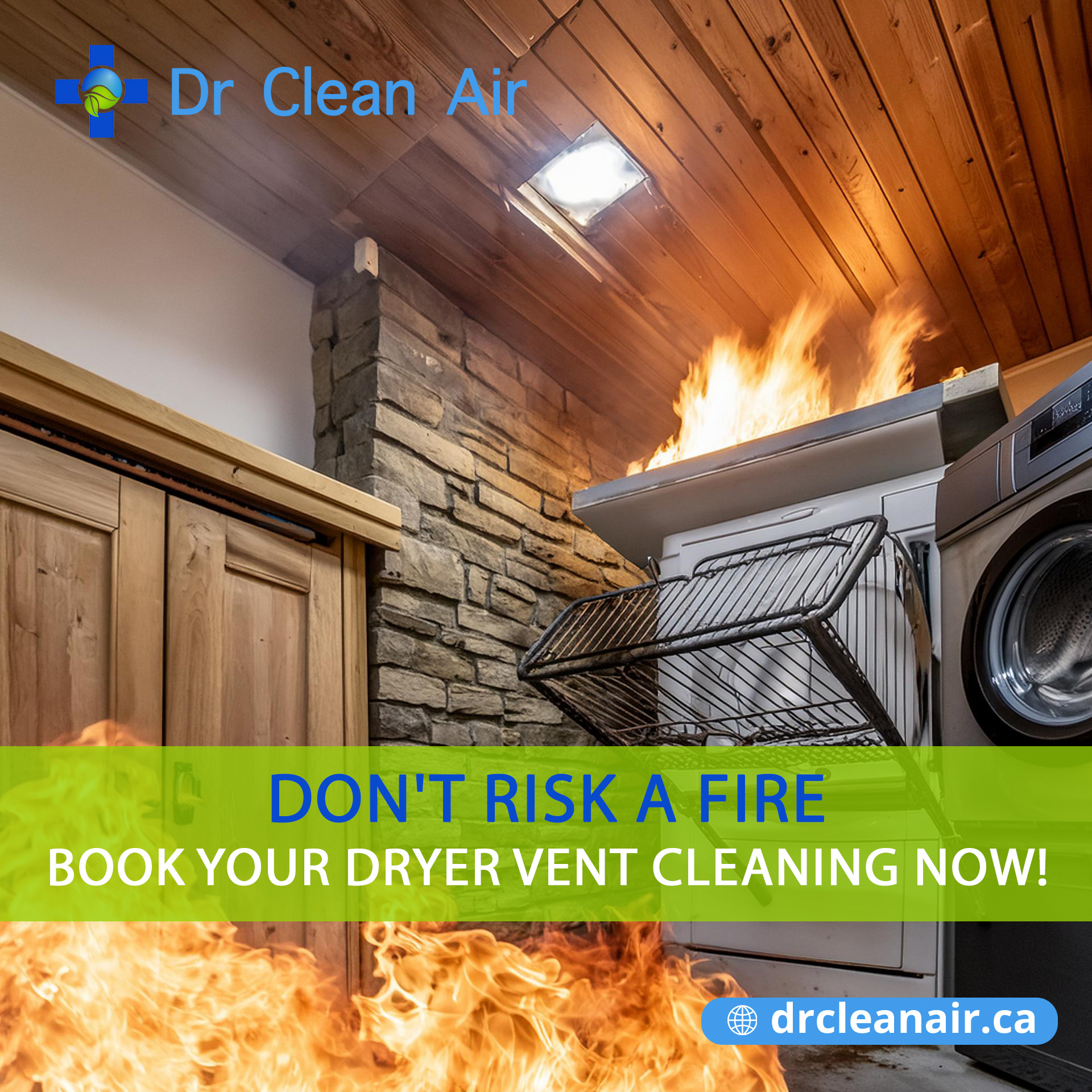Dryer Fires
Did you know dryers are one of the leading causes of home fires? Every year, there are more than 15,000 dryer fires across Canada. Most dryer fires are caused by failure in cleaning dryer vent ductwork. Dryer vent is highly flammable and it’s even used as tinder to start camp fires. If the lint in your dryer duct is ignited, it can quickly carry the fire throughout your home.
Dryer Vent Safety Tips
Clean lint traps and dryer vents regularly
Cleaning clothes dryer vents should be on your checklist of regular maintenance chores. You can easily clean the lint traps on your own after every load, and most people do because otherwise they start to see a lot of lint left on clean clothes. Dryer vent cleaning should be done a minimum of once a year. Large families that use their dryer more often should have this done even more frequently.
Schedule professional dryer inspections
You may be able to clean the dryer vent on your own, especially if you’re a handy, DIY type. For the sake of convenience, safety, and thoroughness, though, you might want to hire a dryer vent cleaning company to do it for you. For one thing, these professionals can clean all of your ducts at once, ensuring that not only your dryer, but also your HVAC air ducts are clean and safe for continued operation. Hiring an appropriate residential and commercial duct cleaning service annually is a smart move for concerned homeowners.

Know your codes
Whoever installs your dryer should be well aware of fire safety codes and adhere to them, but you might want to check to make sure that your vent is at least four inches in diameter, that it is as large as the dryer outlet, that the exhaust duct is no longer than 25 feet, that dryer exhaust vents to the outdoors (as opposed to, say, an attic or crawl space), and that fittings are secure so exhaust doesn’t seep back in. Observing all of these safety guidelines will not only ensure that your dryer meets safety codes, but it will help to reduce the risk of fire or other hazards.
Keep a fire extinguisher nearby
The positioning of fire extinguishers in your home is a matter of personal preference, but the best placement is near potential fire hazards and escape routes. This means posting fire extinguishers near exits like windows or doors, as well as in the kitchen and the laundry room.
Don’t leave home with the dryer running
You wouldn’t leave the oven, the coffee pot, or the iron on when you’re not at home. But this is a good safety strategy to adopt when it comes to all of your appliances, large or small. This is especially important for appliances prone to starting fires. Although regularly scheduled residential dryer vent cleaning can go a long way toward ensuring that your clothes dryer is safe to operate, you want to be on hand to take action should anything go wrong. Don’t forget, running appliances during peak daylight hours will also reflect on your electric bill.

